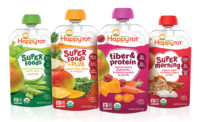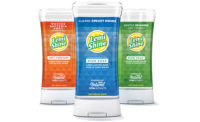If the Consumer Isn't Happy with Packaging, Nobody's Happy
People are generally satisfied with packaging -- until they decide to buy.

BRANDPACKAGING recently hosted a Webinar, “Packaging Matters: Studying the Satisfaction Gap in Consumer Packaging,” with global packaging company MeadWestvaco Corporation (MWV). The topic garnered such interest that we decided to continue discussion on the issue. Brian Richard, director, consumer and customer insights, MWV, and Steve Kazanjian, director, global creative, MWV, point out a current mindset on packaging and the danger with that way of thought. They then challenge brands to implement options that will close the satisfaction gap.
You’ve repeatedly heard it said throughout the industry that packaging matters for brands. Owners, designers, suppliers and manufacturers pour intense effort into getting product packages noticed on shelf. Packaging is especially important to brands as so many purchase decisions are made at shelf: If the product’s housing catches the consumer’s eye, the item may go home with them.
“According to our findings, consumers frequently make purchasing decisions in the store,” says Richard. “A majority (64 percent) of consumers will sometimes buy a product off the shelf without researching it first. Despite the smartphone revolution, most consumers (72 percent) still rarely use a mobile device to research a product while shopping.”
So, of course brands need the pack design to appeal to their target audience. Even more impressive is consumers’ rating of packaging as one of the most important parts of a brand’s marketing campaign, according to a Pro Carton study.
“When it comes to repeat purchasing, packaging is ranked as one of the highest drivers, having more impact than TV ads, online reviews or even recommendations from friends,” says Richard.
Facts and figures like these validate the packaging and branding world’s emphasis on the pack. You can’t deny packaging is powerful.
“With all the options available to brand owners, packaging is still the only marketing communications vehicle guaranteed to reach 100 percent of a brand’s consumers,” says Kazanjian. “And that’s how we think of packaging — less as a functional container and more as a marketing distribution channel.”
It’s not wrong to use packaging for communicating your brand to the customer. After all, you need to help consumers figure out if the product is right for them. But, as it turns out, packaging is meant just as much for the buyer as it is for the brand.
“MWV commissioned the ‘Packaging Matters: Packaging Satisfaction Study’ to examine consumer satisfaction with packaging across 10 different categories from the store shelf through transport, storage, use and disposal,” says Kazanjian.
“Our study suggests packaging affects purchase intent, overall product satisfaction and repeat purchase behavior. In fact, our research shows that when it comes to making purchasing decisions, the average consumer ranks a product’s packaging almost as important as the brand itself (10 percent versus 12 percent). In many categories, consumers see packaging and brand as one unified experience.”
That’s great news — if people are happy with the brand’s packaging.
“‘Packaging Matters’ showed us that packaging is a critical component of the marketing mix when it comes to purchase intent, and that there is a low level of satisfaction overall,” says Kazanjian.
So low, in fact, that brands you’re actively involved with may have a very good chance of being thought of poorly in the consumer’s mind.
“Less than 20 percent of consumers are very satisfied with product packaging, and one in 10 consumers is actively frustrated,” Kazanjian states.

How can this be when focus groups tell brands they like the design, or eye-tracking reports show a certain brand as the first noticed? Surely these results mean a brand is doing well with customers: They are noticing and liking the product packaging. MWV’s study found the trouble starts once the consumer decides to buy.
“While consumers are more satisfied with the packaging at the shelf, the brand’s delivery on its promise often declines from there,” says Richard. “Our study shows that packaging satisfaction decreases significantly once consumers leave the store and experience the structural or functional performance of the package at home or on the go.”
“Shoppers are often frustrated by structural features that don’t perform according to expectations. Of the 15 packaging attributes studied, only a small percentage of consumers ranked shelf appeal, or the product’s ‘attractiveness’ and ‘distinctiveness,’ as ‘very important’ features to their overall product satisfaction (6 percent and 10 percent, respectively). However, this is where brands perform best.”
Great package design is important, yes. It just needs to be coupled with great structural integrity and ease of use.
“True, packaging that doesn’t appeal in store will indeed be overlooked — but if you take away one thing from our study, know that packaging also has to deliver on brand promises throughout the rest of the product life cycle,” says Kazanjian. “How you hold it, open it, dispense it, reseal it and store it are all moments to forge an emotional bond between brand and consumer.”
Those crucial moments when a customer first sees a product usually determine his or her buying decision. Even so, what’s happening then is changing these days. Consumers expect to be wowed at the shelf, but they also want to be wowed as they take the product home and begin use.
“As more consumers shop online — and Forrester tells us 192 million of them will do so in 2016 — the in-store experience with product packaging will become less relevant,” says Kazanjian. “The ‘first moment of truth’ has fundamentally shifted into a small, low-res JPG image, and shelf appeal doesn’t really matter anymore. What matters is that the package is easy to carry, store and use — and can reinforce your brand promise.”

In short, consumers don’t want their product experience to be hampered by the package, or they might view the brand as failing them.
“In terms of what matters most,” says Richard, “consumers want packaging that protects from breaking or spilling (74 percent), maintains product integrity (72 percent) and gets the entire product out of the package (66 percent).”
“Brands are overperforming on shelf appeal and aesthetics but underperforming on the critically important performance attributes that impact overall product satisfaction, support repeat purchase and reinforce brand values,” he continues. “Think of the last time a package leaked or failed to dispense a product — did you buy that product again?”
Clearly, we realize now more than ever that packaging matters to the consumer. What gets brands into this predicament of leaving buyers unsatisfied?
“Brands have historically been focused on the supplier journey of packaging,” says Richard. “They’ve thought of packaging as a cost and sought to cost-optimize the journey from manufacturer to distribution to store shelf. In this traditional view, once the product has been purchased, the brand owner’s work is done. We focus on the consumer packaging journey — from purchase to end of life.”
“We believe packaging is more than a container, that it is the physical manifestation of a brand promise,” says Kazanjian. “According to ‘Packaging Matters,’ once a package lands in a shopper’s cart, its work has only just begun. That’s when it has to start being easy to transport, maintaining product integrity and protecting from spilling and breaking — from the cart to the car to the kitchen cabinet, through usage and storage, all the way to disposal. And all this structural performance should be the physical manifestation of the brand promise, too.”
“Structural elements of packaging are not only functional; they can play a key role in reinforcing brand promises,” he continues. “Bayer’s revolutionary easy-open cap is a great example. Focused solely on the senior-friendly market, the bottle cap not only reduces a serious pain point for arthritic patients, but it also reinforces a nurturing emotional bond with a specific core demographic.”
So what can brands do to better their packaging to ensure customer satisfaction? Richard has the answer.
“How should a brand prioritize improvements to its packaging? While each product category differs, there are some common themes around areas for improvement related to the functionality of the packaging, such as ‘easy to open,’ ‘easy to carry,’ ‘maintains product integrity’ and ‘getting the entire product out of package.’”
“Brands should focus more on structural packaging innovations that delight consumers in addition to in-store shelf appeal,” says Kazanjian. “Conventional wisdom assumes the product with the flashiest packaging design wins, but our research encourages a focus on function over form. Right now, the basic objectives of packaging — protecting, storing and dispensing — are not meeting consumers’ expectations. In fact, the package that delights consumers after they leave the store holds the most promise for driving repeat purchase.”
Closing the customer satisfaction gap is much easier if brands design and manufacture packaging that survives the product life cycle with customers in mind.
“Packaging really does matter,” Kazanjian finishes. “Because 100 percent of a brand’s purchasers interact with its packaging, it should be an integral component of the marketing communications mix and the physical manifestation of a brand experience. The current gap in consumer satisfaction gives brands an opportunity to build loyalty by focusing on what matters most to consumers, enabling them to delight consumers and deliver on their brand promises.”
Missed the free Webinar? Register to watch it on-demand here: www.brandpackaging.com/PackagingMattersWebinar.
Looking for a reprint of this article?
From high-res PDFs to custom plaques, order your copy today!







